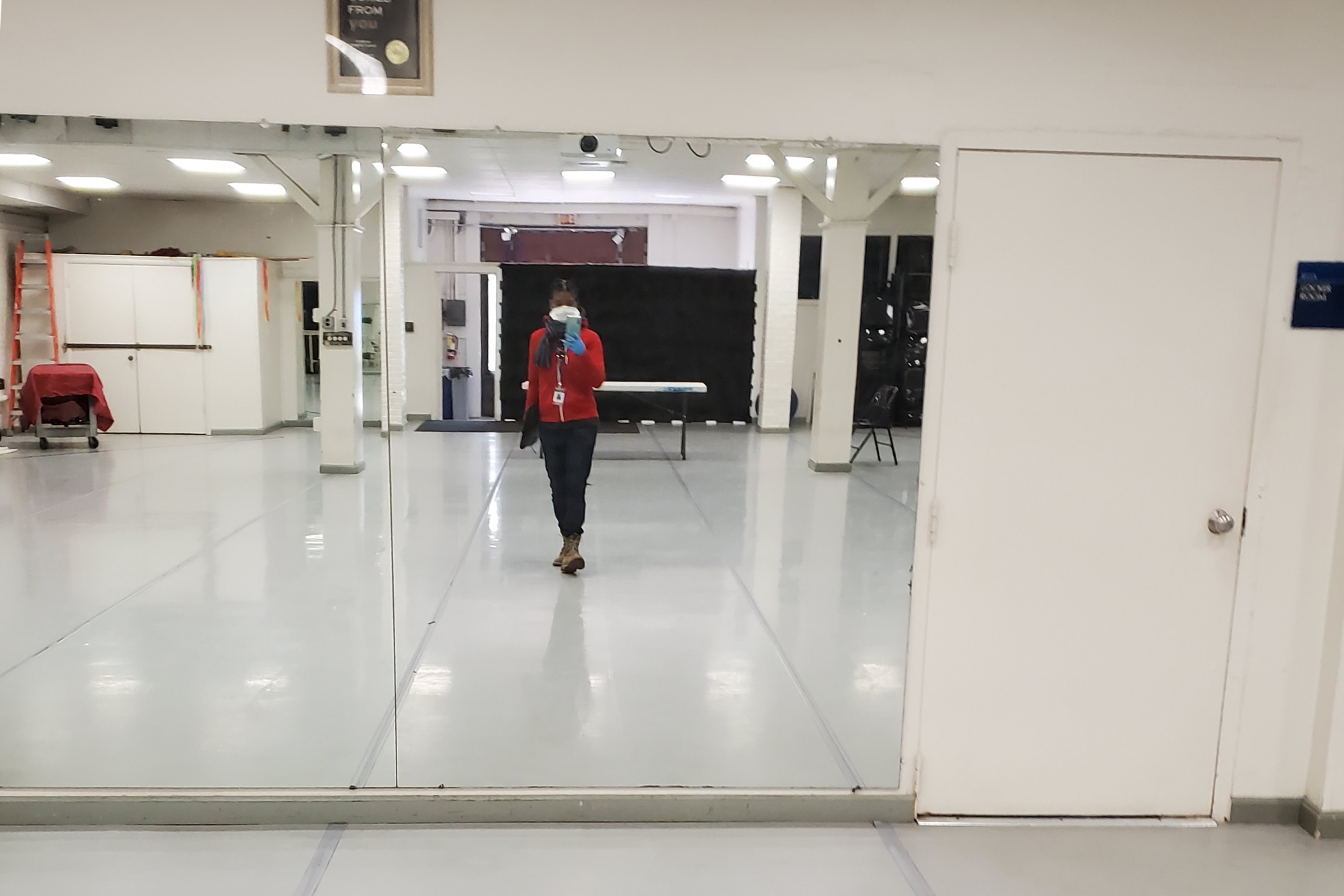While the majority of the George Washington University community works and learns from afar, designated on-site university employees are still on call—keeping campuses clean and safe, maintaining good environmental conditions and shepherding GW’s ongoing campus improvement projects.
According to the GW Employee Handbook, designated on-site employees are those whose duties or services must be performed despite an emergency or change in the university operating status. They work in units across the university, including student affairs, student health services, facilities, safety and security, transportation and University Police. Many of these employees report to GW’s campuses only sporadically, but some are boots-on-the-ground almost daily. GW Today spoke to a few of GW’s 1,300 essential employees about what they’re doing and how they feel.
Monet Ballard
Program Manager, Relocation Services
Facilities Planning, Construction and Management
Though many of GW’s campus improvement initiatives are necessarily on hold, a few high-priority projects must go on. And Monet Ballard is keeping them in motion. Currently, she’s working with movers to pack and store about 1,100 pieces of furniture from Thurston Hall so construction can start on time. The furniture will be redistributed among other residence halls over the summer, replacing older pieces.
“The first couple of days felt a little like there’d been an apocalypse—a little creepy, with nobody here,” she said of the now-empty Foggy Bottom campus. “Now I’m kind of getting used to it.”
For the past few weeks, Ms. Ballard and her team have been working on campus Mondays through Saturdays, anticipating their approaching deadline for the Thurston Hall renovation. They’re learning to recognize each other’s faces above their standard-issue black masks: “A lot more eye contact,” she jokes.
Even under difficult circumstances, Ms. Ballard relishes the challenges and the hands-on nature of her job. “Every day is different, and so much planning goes into the projects,” she says, “so it feels really good to accomplish them.”
Ms. Ballard admits there are small, unexpected upsides to the disruption caused by the COVID-19 pandemic. Under normal circumstances, her commute by car from Manassas, Va., could take up to three hours. Now it’s almost never more than 45 minutes. “Traffic is so much nicer,” she said. “I want things to go back to normal, but it’d be nice if the traffic could somehow stay this easy.”

(Photo courtesy Sylvia Grimes)
Sylvia Grimes
Industrial Hygienist
Division of Safety and Security
Sylvia Grimes’ work largely involves supporting scientific and research staff by making sure laboratories and workspaces conform to environmental standards. Now, as GW’s fabrication spaces pivot to the research and manufacture of safety gear for frontline workers, her work is perhaps more essential than ever.
Before students and faculty members could begin their collaboration to 3-D print personal protective equipment for health care workers, for instance, Ms. Grimes had to make sure the area where they worked would be safe. She and a facilities team inspected the space, talked to the scientists about what they would be doing and what their needs were and determined next steps like contracting air samples and setting up air purifiers. Thanks to her efforts, the team was able to produce about 40 face shields a day for the duration of the initiative.
That kind of work “really gives me a sense of self-fulfillment,” Ms. Grimes said. “I enjoy what I do.”
She has also been involved in some remediation projects that, under normal circumstances, would have had to wait until students left campus for the summer—addressing mold concerns in the dance studio, for instance.
“It does help that the buildings aren’t occupied right now, because it’s easier to get things done,” Ms. Grimes said. “But it can be difficult, too. I miss the interaction, and I miss being able to really immerse myself in a situation to understand it.”
Percy Lamar
Environmental Occupational Health and Safety Specialist
Division of Safety and Security
“We’re kind of behind the scenes on a lot of things,” Percy Lamar said of his team in the Division of Safety and Security's Office of Health and Safety.
They might be behind the scenes, but they may also have been ahead of the times. Long before facemasks became a nearly universal accessory, Mr. Lamar spent many of his workdays in laboratory safety trainings, patiently instructing researchers, students and faculty in how to use them.
“Everybody knows right now that it is so important to wear a mask,” he said. “But when you look around, there’s a lot of people that don’t know how to properly wear and properly fit them.”
With most researchers gone from campus, Mr. Lamar no longer conducts regular lab trainings. Instead, he and his team are still working two or three days a week to pull hazardous chemicals and biological materials from the few labs that are still operating and transport them to the agencies that can dispose of them properly.
“We have a dynamic team,” he said.
After 21 years in the Marine Corps, Mr. Lamar isn’t particularly alarmed about the hazards of being on campus during the COVID-19 crisis. And he’d rather be on the scene than watching from the sidelines: “I’m a ground-pounder.”
But he also said the feeling on campus now is very different, and a little melancholy.
“It’s so quiet right now,” he said.



